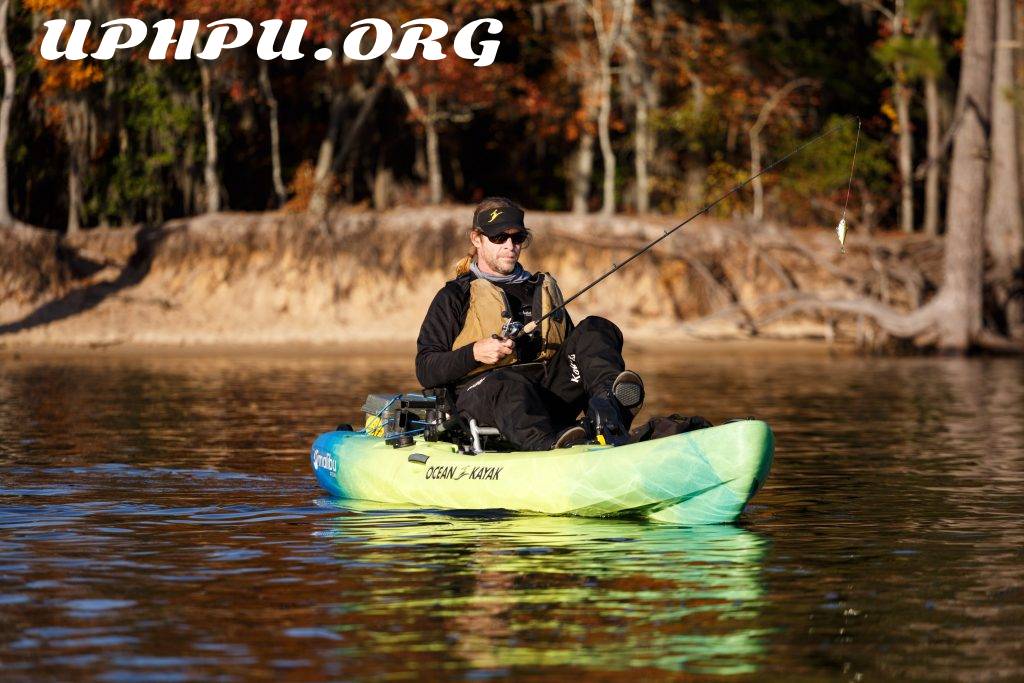Everyone is unique in their own ways. Some of us might have knee issues, while others need to stick to a budget due to financial limitations. A few might be aiming for a top-notch tournament-ready setup without worrying about the cost. When choosing a pedal kayak, consider where you’ll primarily be using it, your physical condition, your budget, and other factors.
I hope this article provides you with more insights as you search for the perfect pedal kayak for your needs. Personally, I we’ve tested multiple fishing pedal kayaks for the 2023 season (you can find a dealers nearby or online). It suits my preferences, fishing style, and my physical abilities at the moment. Because I have knee problems, I ruled out a pedal system that works like a recumbent stair climber. I also appreciate that the advanced drive technology featured in the high-end Jackson Kayak is also available in the more affordable pedal kayak option. It’s the same technology, just in a different kayak.
Different Kayak Types
There are mainly three ways kayaks can be powered: using a paddle, pedals, or a motor. Two of these are quite simple, as you can use any paddle or motor with almost any kayak. The third option raises some queries. How do I choose the suitable pedal drive? What factors should I consider when looking for a pedal drive kayak? Pedal-driven kayaks offer a lot of variety in the market. With different pedal drive designs, kayak sizes, and even prices, you have plenty of options. This article will break down these aspects and guide you on what to focus on.
Types Of Pedal Drive Kayaks
There are several types of pedal-driven kayaks available, each with its own unique features and advantages. Here are some of the common types:
- Rotational Pedal Drive: This type of pedal drive uses a rotational motion, similar to a bicycle pedal, to propel the kayak forward. It often features fins or blades that move in a circular motion underwater.
- Reciprocating Pedal Drive: In this design, the pedals move back and forth in a linear motion, similar to how you might use an elliptical machine at the gym. This motion translates into the kayak’s movement.
- Propeller Pedal Drive: These kayaks use a propeller mechanism powered by the pedals to push the kayak forward. The advantage is that you can also pedal in reverse, allowing for better maneuverability.
- Flex Drive: Some pedal kayaks use a flexible shaft mechanism to transmit pedal power to a propeller or fins. This design often allows for shallower water operation and protection against underwater obstacles.
- Paddle-Assist Pedal Drive: These kayaks combine pedal power with a traditional paddle. This can be useful for situations where you need quick acceleration or precise maneuvering.
- Torqueedo Pedal Drive: This type of drive incorporates an electric motor along with the pedal power. It offers a blend of human and electric propulsion, extending your range and making longer trips possible.
- Hull-Integrated Pedal Drive: Some pedal kayaks have the pedal mechanism built directly into the hull, reducing the chances of snagging on underwater obstacles.
These are just a few examples of the different types of pedal-driven kayaks available on the market. The choice you make will depend on factors like the type of water you’ll be kayaking in, your preference for motion, and your budget.
Advantages To Pedal Drive Kayaks
Kayaks with pedal systems offer several advantages that enhance the kayaking experience:
Pedal kayaks allow you to move by using your legs, freeing your hands for other activities like fishing or taking photos. This hands-free operation is a significant benefit, offering more convenience and versatility on the water.
Pedaling engages the strong muscles in your legs, enabling you to cover longer distances with less effort compared to using a paddle. This efficient movement is especially helpful during extended trips or when dealing with currents.
Using pedal systems is gentler on your upper body compared to traditional paddling. This means less strain on your arms and shoulders, reducing fatigue and allowing you to enjoy longer and more comfortable kayaking sessions.
Pedal-driven kayaks provide better control and more precise maneuvering. This is particularly useful for navigating through tight spots, avoiding obstacles, and making small adjustments in your course.
Many pedal systems allow you to pedal in reverse, providing greater flexibility for positioning and navigating. This feature can be especially handy in various situations, enhancing your overall kayaking experience.
For fishing enthusiasts, pedal kayaks offer a significant advantage. They allow you to maintain your position easily while you focus on casting, reeling in, or handling your catch. This hands-free operation and precise control are valuable for a successful fishing trip.
Conclusion
A fishing kayak that utilizes pedal power for movement instead of a traditional paddle is known as a pedal-powered fishing kayak. As far as the best pedal kayak, it’s all personal preference. A pedal kayak design is advantageous for anglers because it grants them the freedom of hands-free operation, enabling them to focus entirely on their fishing activities.
The pedal-powered system presents a more efficient and quicker means of propulsion, enabling fishermen to explore larger areas of the lake.
In conclusion, a pedal-powered fishing kayak could serve as an excellent option for anglers who desire a more advanced and efficient approach to their fishing endeavors.
Wishing you successful fishing adventures ahead!

